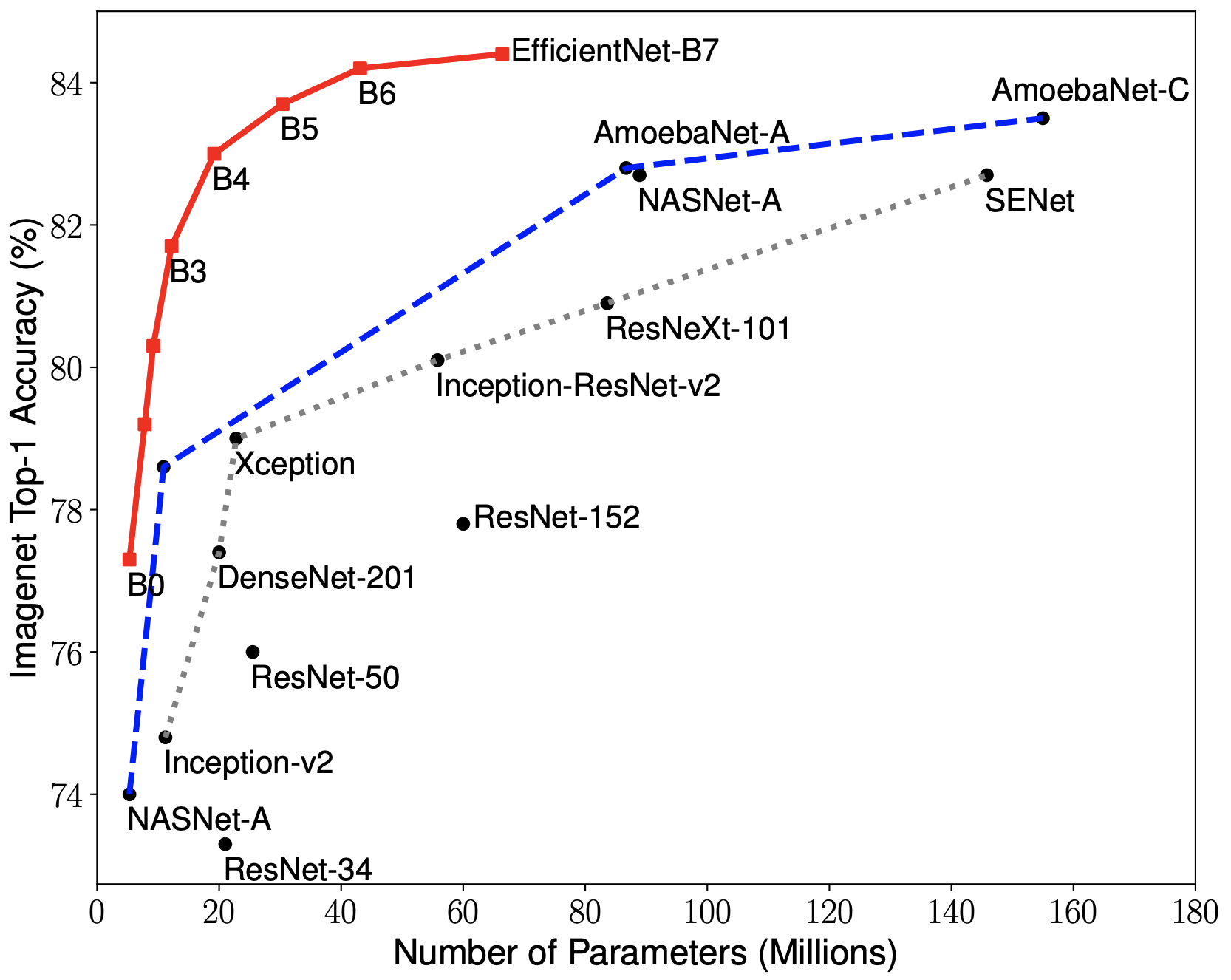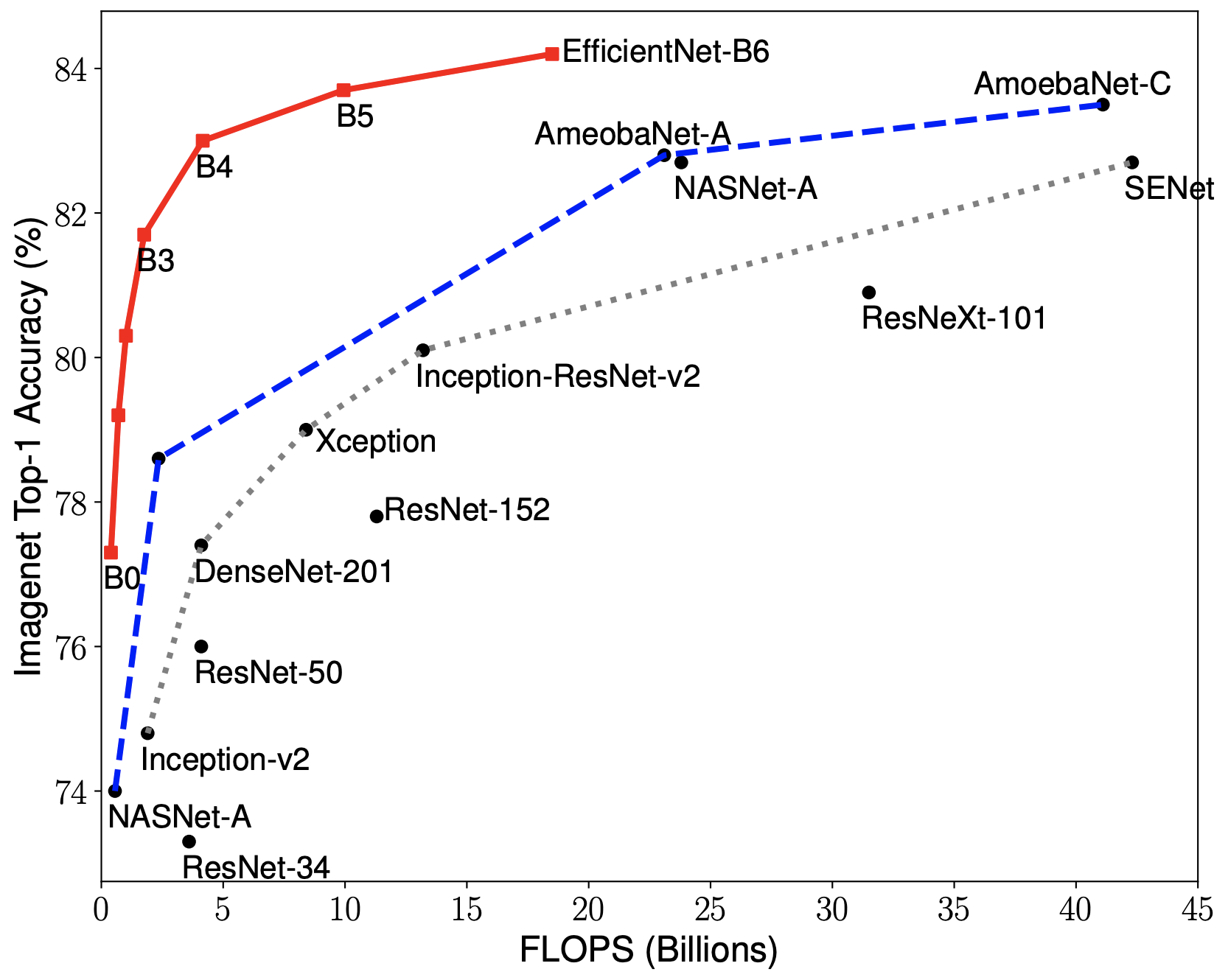This work is to do car recognition by fine-tuning EfficientNet with Cars Dataset.
EfficientNets are a family of image classification models, which achieve state-of-the-art accuracy, yet being an order-of-magnitude smaller and faster than previous models. EfficientNets are developed based on AutoML and Compound Scaling. In particular, one first uses AutoML Mobile framework to develop a mobile-size baseline network, named as EfficientNet-B0; Then, we use the compound scaling method to scale up this baseline to obtain EfficientNet-B1 to B7.

|

|
EfficientNets achieve state-of-the-art accuracy on ImageNet with an order of magnitude better efficiency:
We use only the train part of the Cars Dataset, which contains 8,144 training images of 196 classes of cars.
 .
.
The data is split into 7326 training images and 814 validation images, where each class has been split roughly in a 90-10 split.
There are a lot of workings with this dataset. Our approaching is in particular with:
- Using the bounding boxes
- Using the state-of-the-art model (EfficientNet)
- Having a good fine-tuning, here 60 first epochs, we use Step learning rate. Then next 60 epochs, we use Cyclical Learning Rate
- We also use the Apex package. The intention of Apex is to make up-to-date utilities available to users as quickly as possible.
$ git clone https://github.com/hphuongdhsp/Cars_Dataset_by_EfficientNet
$ cd Cars_Dataset_by_EfficientNet
$ wget http://imagenet.stanford.edu/internal/car196/cars_train.tgz
$ wget http://imagenet.stanford.edu/internal/car196/cars_test.tgz
$ wget https://ai.stanford.edu/~jkrause/cars/car_devkit.tgz$ cd Cars_Dataset_by_EfficientNet
$ python3 data_processing.pyThe aim of this step is spitting the training and validation set. We also use the bounding box columns to crop our images.
$ cd Cars_Dataset_by_EfficientNet
$ python3 train.py The goal of step 4 is to predict the data from testing set. For that, we shall create a csv file, namely, submitssion.csv that is stored in ./Cars_Dataset_by_EfficientNet/data/ To do that, run
$ cd Cars_Dataset_by_EfficientNet
$ python3 predict_and_submission.py Because of limiting of resource (only 11GB of GPU), here we use only batch-size 16 for "efficientnet-b3" model. We get 92,2% accuracy scores. To get more accuracy scores, you can change these parameters in the "parser.py". It will make a better performance.
The pretrained weights of EfficientNet-b4,EfficientNet-b4 are released on 18-June. To use them, please upgrade the pip package with
pip install --upgrade efficientnet-pytorchTo use the tensorboard, please run
tensorboard --logdir /path/to/log-filetensorboard --logdir /media/hoang-phuong/376A1D136649692B/car_data_set/tensorboard/logs
But there is a bug, u need to change the file" /efficientnet_pytorch/utils.py" as:
- random_tensor += torch.rand([batch_size, 1, 1, 1], dtype=inputs.dtype) # uniform [0,1)
+ random_tensor += torch.rand([batch_size, 1, 1, 1], dtype=inputs.dtype, device=inputs.device)
Access (https://github.com/lukemelas/EfficientNet-PyTorch/commit/939d4abdeefc07e63d8bd42e7223365a4bc67942#diff-57e79865f7111e0dd0165032e805d446) to get more details.